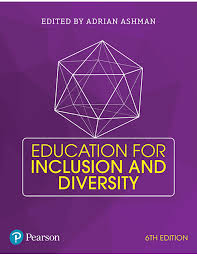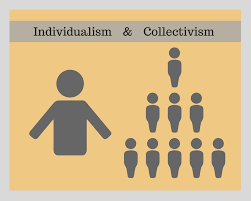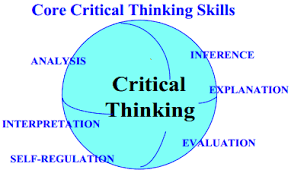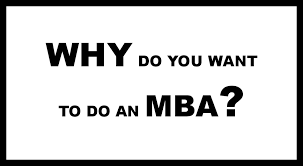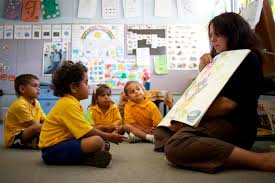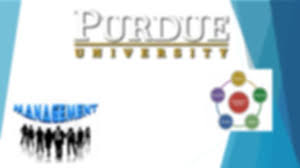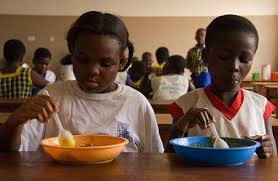
Poverty and Food Security Assignment
Poverty and Food Security Assignment
The members of the United Nations appreciated the content you provided on population growth. Now they are asking you to expand the white paper to include global food security as it relates to population growth and poverty. Read the Case Study and provide an assessment based on the questions below.
(For a brief list of resources for this assignment, please see the end of the course guide.)
Overview
We can view global food security as the effort to build food systems that can feed everyone, everywhere, and every day by improving food quality and promoting nutritional agriculture.[1] That said, there are certain practices that can advance this project:
Identifying the underlying causes of hunger and malnutrition
Investing in country-specific recovery plans
Strengthening strategic coordination with institutions like the UN and the World Bank
Developed countries making sustained financial commitments to the success of the project
We must bear in mind that more than three billion people, nearly one-half of the global population, subsist on as little as $2.50 a day and that nearly 1.5 billion are living in extreme poverty on less than $1.25 a day. According to the World Health Organization, the United Nations, and other relief agencies, about 20,000 people (mostly children) starve to death in the world every day, for a total of about seven million people a year.
In addition, about 750 million (twice the population of the United States) do not have access to clean drinking water, meaning that some one million people die every year from diarrhea caused by water-borne diseases.
The population of Earth is expected to grow from 7 billion in 2010 to 8 billion in 2025, 9 billion in 2040, and 11 billion by the end of the 21st century.[2] If the demand for food is predicted to grow by 50% by 2030 and 70% by 2050, the real problem is not necessarily growing that much food. Rather, it is making that amount available to people.
Moreover, food borne illnesses are prevalent, with nearly 600 million reported cases of food borne diseases each year. These affect mainly children, but also negatively impact the livelihood of farmers, vendors, trade associations and, ultimately, the Gross Domestic Product (national income) of a country. These issues can impose tremendous human, economic, social, and fiscal costs on countries Addressing them allows governments to devote more resources to making desperately needed improvements in infrastructure that raise the quality of life for everyone.
It is not enough to have adequate supplies of food available. Policies that focus exclusively on food production can exacerbate the problem, particularly if, to satisfy the need for quantity, the quality of the food is left wanting.
Reasons for Food Insecurity
Certainly, poverty and the systemic internal conditions creating it inside a country are the unmistakable driving factors behind keeping adequate food resources from reaching people. It is only one factor of several, however. Others include the following:
Inadequate Food Distribution: The reality is that there is more than enough food in the world to feed its people. The primary cause of famines is not poor weather conditions as much as it is getting the needed amount of food to the people who need it most. Quite often causes result from political instability and poor infrastructure, often involving a country’s port facilities, transportation availability and quality of road networks. Paradoxically, although the population is going to increase in the coming decades, the amount of food potentially available will increase along with it. This is due mostly to advances in bio agricultural engineering and increased seed immunity to molds.
Writing in the late 18th century, Thomas Malthus warned that global population would exceed the capacity of Earth to grow food, in that while population would grow exponentially, food production would grow only arithmetically. Although this theory has been proven invalid, the unfortunate result of its propagation has been for some governments to rationalize political choices that avoid helping the poverty-ridden and starving.
Political-Agricultural Practices: The widespread use of microbiological, chemical, and other forms of pesticides in food continues to be a serious issue throughout the global food chain. Widespread use of fertilizers also causes illness in millions of people every year, not only from the food itself, but from run-off into streams and rivers, contaminating entire water supplies. The human, social, and economic costs of such practices impede improvements being made not only in the raising of crops, but in their distribution. Added to this, the rising demand in developed countries for biofuels, currently refined mostly from corn and soy beans, reduces the amount of arable land devoted to producing food.
The failure of many farmers in the developing world to rotate their crops harms the replenishing of nutrients necessary to continue growing crops. In addition, the repeated use of agricultural land without allowing it to lie fallow in order to replenish needed soil nutrients thereby increasing fertility and maximizing crop yield results in reduced agricultural output and insufficient crop yields.
Economic Issues: The fact is, government policies that focus on growing cash crops, for example, are designed solely to export them to earn foreign exchange. This may be fine for the government in its efforts to earn money, but the result is that farmers end up growing for foreign markets and not domestic ones. This leads to shortages of necessary staples. Consequently, the poorest of the population are frozen out of the local markets because they cannot afford the food that remains to be sold.[3]
Civil Strife: Civil war can interrupt the flow of food from gathering depots, such as ports, to distribution centers where it can be handed out to people. During the 1990s, Somalia was particularly hard hit by their civil war, as clans fought for control of the main port at Mogadishu. This affected the flow of food to the rest of the population. In this case, as with many civil wars, whoever controls the supply of food controls the country. In failed and failing states like Zimbabwe, Democratic Republic of Congo, Haiti, South Sudan, Yemen, and Libya, food very often is another weapon used by one segment of the population against another.
II. Case Assessment
The issue is not the lack of food in the world, but the access to food. Simply put, food is not getting to where it needs to be in time. In developing countries, the food shortage is due to governmental control over food. These governments maintain their control and preference for certain groups by limiting access of nutritious food to certain other groups. The result is the weaponizing of food.
In this second part of your whitepaper, research the impact of poverty on global food security and the technology available potentially to remedy this situation. Write a minimum of four pages assessing the impact, citing at least five credible sources in your research. Refer specifically to the role these issues have had in the developing country of your choice. In this assessment, please include:
A cover page with your name, title of the course, date, and the name of your instructor
A one-half page introduction
A middle section that is numbered and divided into three one-page sections. Each of these sections should answer one of the following questions:
What is food insecurity and what role does population growth play in it?
What factors specifically interrupt the flow of food from the source to the people in the developing country you selected?
What forms of technology can be used to reduce hunger and improve food security? Explain how these technical solutions can do that.
A one-half page conclusion
Cite at least five credible sources excluding Wikipedia, dictionaries, and encyclopedias for your assessment.
For a brief list of resources for this assignment, please see the end of the course guide.
We can write this or a similar paper for you! Simply fill the order form!




